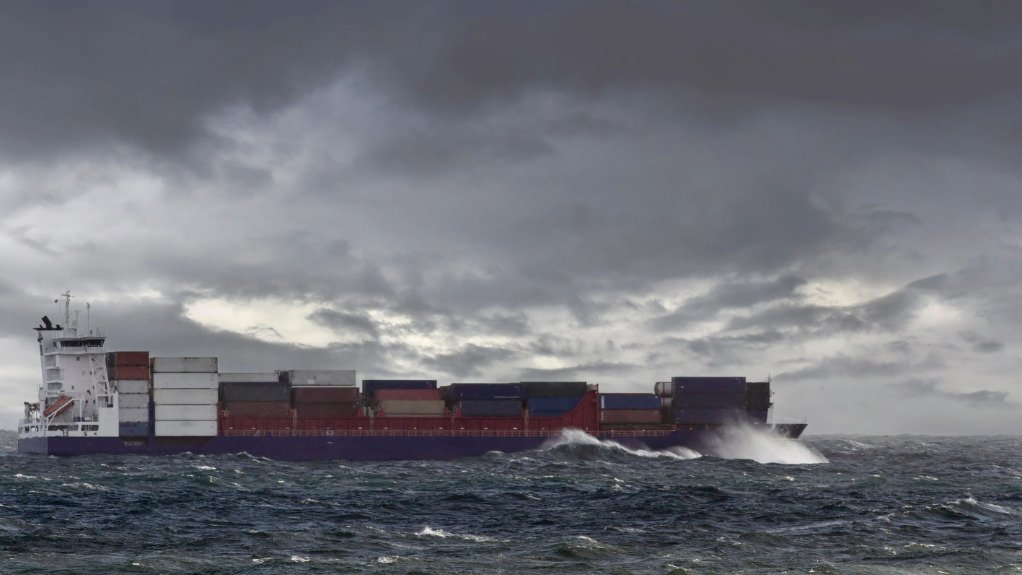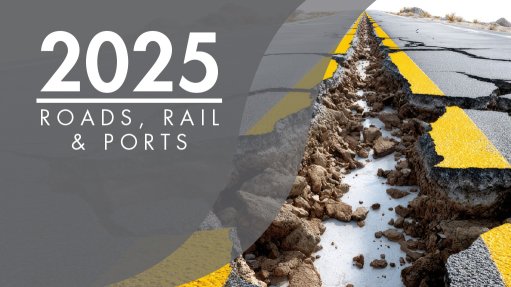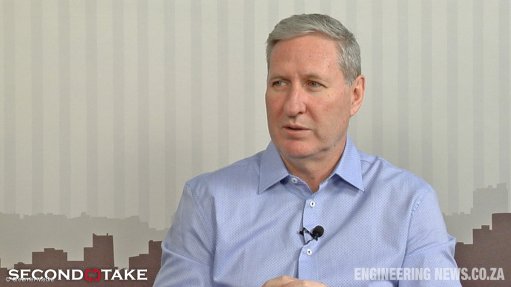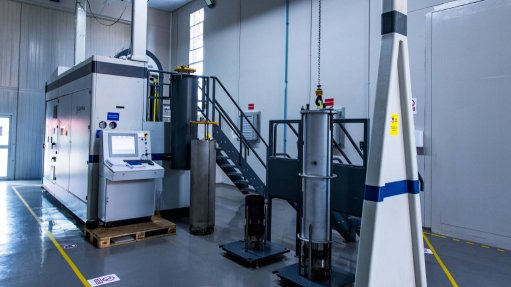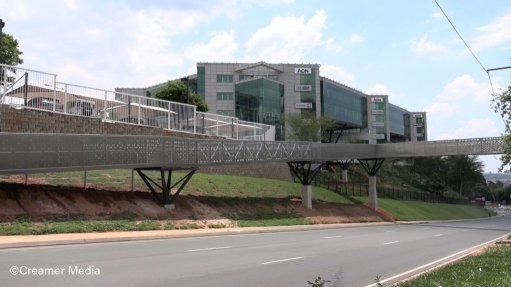Transport sector shows signs of stabilisation amid ongoing structural challenges – index
After declining for eight consecutive months to reach a revised index level of 113.5 in January, the lowest level since December 2022, the Ctrack Transport and Freight Index (TFI) increased in each of the three months to April to reach an index level of 115.4.
The latest edition of the quarterly TFI was compiled in collaboration with independent economist Elize Kruger.
At this level, the index was 1.6% higher than in January, but remained 6.4% below the level recorded a year earlier. This marginal recovery represented a stabilisation of the logistics sector following a prolonged slump, although significant weaknesses persisted in some of the subsectors.
An analysis of the first four months of this year indicated that three of the subsectors declined year-on-year while three posted growth. However, owing to the continued decline in the road freight subsector, which carries the most weight in the overall index, the logistics sector as a whole contracted by 4.7% compared with the same period in 2024.
Road freight declined by 7.5%, transport by pipelines decreased by 13.8% and the storage and handling subsector dropped by 10%.
In contrast, air freight grew by 14.1%, rail freight by 3.9% and sea freight by 1.2%. Despite the increases in February and March, the index plateaued in April, indicating that the logistics sector remained under strain.
Road freight continued to face significant pressure in early 2025, extending a trend that began in mid-2023. The subsector's share of total freight payload in South Africa declined from 89.1% in November 2022 to 82.1%.
After modest growth of 1.5% in 2023, road freight payload dropped by 8.3% in 2024 and contracted further by 6.9% year-on-year in the first quarter of 2025. Weaknesses in South Africa's broader economy contributed to this trend, particularly in the primary and secondary sectors.
The mining sector experienced an average contraction of 2.2% over the three years to 2024 (in real terms) and declined by 4.1% quarter-on-quarter in the first quarter this year.
Agriculture and manufacturing contracted by 3.7% and 0.1% on average, respectively, over the same period, with manufacturing further decreasing by 2% quarter-on-quarter in the first quarter.
Reduced activity in these sectors, especially the export-oriented mining industry, diminished the demand for road freight transport.
Additional contributing factors included the redirection of cargo ships to other African ports, reducing local demand for heavy vehicle transport, and a partial shift of cargo to rail freight.
However, the shift to rail explained less than 20% of the observed reduction in road freight in the first quarter. Heavy vehicle traffic on the N4 route to Maputo remained subdued in early 2025, continuing a trend from 2024, while the number of Class 3 and 4 trucks passing through the Tugela Toll Plaza on the N3 increased marginally, following a 1% contraction in 2024.
The subdued demand for road freight was also reflected in vehicle sales data. Sales of new extra-heavy trucks fell by 10.8% year-to-date compared to the same period in 2024, contrasting with a 12.6% rise in overall vehicle sales.
The decline was partly attributed to an oversupply of extra-heavy vehicles resulting from robust growth between 2021 and 2023. In contrast, sales of heavy vehicles increased by 19% year-on-year in the first four months of this year.
The rail freight subsector continued its gradual recovery. The first quarter marked the third consecutive quarter of year-on-year growth. While this shift remained slow and was not the primary reason for road freight's weakness, rail's share of total freight payload increased from a low of 10.3% in November 2022 to 17.9% in March.
This was an improvement compared with 15.6% in 2023 and 16.9% in 2024, although still below the ten-year average of 25.9% recorded between 2008 and 2017. Rail freight payload increased by 5.7% in the first quarter, following marginal growth of 0.8% in 2024.
Government initiatives continued to prioritise rail freight through structural reforms as outlined in the Freight Logistics Roadmap and reinforced by Operation Vulindlela's second phase. These reforms aimed to rebuild rail capacity and achieve a more sustainable balance between road and rail freight.
The newly established Transnet Rail Infrastructure Manager was preparing to allocate the first route slots to private trains, following a major policy change allowing third-party access to the national rail network. Transnet targeted an increase in rail freight volumes from 161-million tonnes in 2024 to 250-million tonnes by 2030.
The air freight subsector performed strongly in the first four months of 2025, consistent with global patterns. In April, global air freight volumes rose by 5.8% year-on-year in cargo tonne-kilometres.
Demand was supported by the seasonal shipment of fashion and consumer goods ahead of the summer retail season in the northern hemisphere, as well as front-loading in anticipation of changes to US import tariffs. South Africa mirrored this trend, with the air freight index growing by 14.1% year-on-year during the same period.
Total consolidated airport flight movements rose by 2.3%, while cargo load on planes increased by 16.7%, building on 2024’s 21.9% growth.
The sea freight subsector, after contracting for two consecutive years, grew by 3.4% in 2024 and maintained positive momentum with 1.2% growth in the first four months of 2025. Data from Transnet National Ports Authority showed a 2.2% decrease in container volumes compared with the same period in 2024, but total cargo handled at ports, excluding vehicles, increased by 8.8%.
Despite some signs of recovery, the sector remained in urgent need of further infrastructure investment. The announcement of a R51-billion government guarantee facility by Transport Minister Barbara Creecy was intended to stabilise Transnet’s capital programme and facilitate reform implementation.
This funding was aimed at addressing structural inefficiencies and restoring critical freight corridors. While challenges remained, the renewed fiscal support and increased private sector involvement were viewed as essential to improving the country’s trade-enabling infrastructure and logistics performance over the medium term.
The storage and handling subsector declined by 0.1% in 2024, continuing a trend of contraction over previous years. Inventory indicators pointed to continued weakness in the first four months of 2025. Similarly, pipeline transport by Transnet Pipelines declined by 1.8% in 2024, following a 1% decline in 2023.
This trend persisted into early 2025, although a notable increase in April suggested a possible turning point.
The improvement in the Ctrack TFI during the early months of this year indicated that the transport sector would positively contribute to GDP in the first quarter, marking the first such contribution since the fourth quarter.
The transport and communication sector, which underperformed across all four quarters of 2024, showed signs of improvement, increasing by 2.4% quarter-on-quarter on a seasonally adjusted basis in the first quarter 2025, following a 1.1% decline in the fourth quarter.
The stabilisation reflected in the latest Ctrack TFI reading was seen as a positive development. Additionally, the sector received significant attention in the National Budget, with over R400-billion allocated for initiatives including road maintenance, rail infrastructure renewal and public-private partnerships.
Government also confirmed that a guarantee facility for Transnet was under consideration, which was subsequently confirmed through Creecy’s R51-billion commitment.
According to Ctrack CEO Hein Jordt these efforts were essential to addressing structural inefficiencies and restoring freight corridors.
While acknowledging implementation challenges, Jordt said that renewed fiscal commitment and expanded private-sector involvement were critical to revitalising South Africa’s logistics systems and trade infrastructure over the medium term.
Article Enquiry
Email Article
Save Article
Feedback
To advertise email advertising@creamermedia.co.za or click here
Comments
Press Office
Announcements
What's On
Subscribe to improve your user experience...
Option 1 (equivalent of R125 a month):
Receive a weekly copy of Creamer Media's Engineering News & Mining Weekly magazine
(print copy for those in South Africa and e-magazine for those outside of South Africa)
Receive daily email newsletters
Access to full search results
Access archive of magazine back copies
Access to Projects in Progress
Access to ONE Research Report of your choice in PDF format
Option 2 (equivalent of R375 a month):
All benefits from Option 1
PLUS
Access to Creamer Media's Research Channel Africa for ALL Research Reports, in PDF format, on various industrial and mining sectors
including Electricity; Water; Energy Transition; Hydrogen; Roads, Rail and Ports; Coal; Gold; Platinum; Battery Metals; etc.
Already a subscriber?
Forgotten your password?
Receive weekly copy of Creamer Media's Engineering News & Mining Weekly magazine (print copy for those in South Africa and e-magazine for those outside of South Africa)
➕
Recieve daily email newsletters
➕
Access to full search results
➕
Access archive of magazine back copies
➕
Access to Projects in Progress
➕
Access to ONE Research Report of your choice in PDF format
RESEARCH CHANNEL AFRICA
R4500 (equivalent of R375 a month)
SUBSCRIBEAll benefits from Option 1
➕
Access to Creamer Media's Research Channel Africa for ALL Research Reports on various industrial and mining sectors, in PDF format, including on:
Electricity
➕
Water
➕
Energy Transition
➕
Hydrogen
➕
Roads, Rail and Ports
➕
Coal
➕
Gold
➕
Platinum
➕
Battery Metals
➕
etc.
Receive all benefits from Option 1 or Option 2 delivered to numerous people at your company
➕
Multiple User names and Passwords for simultaneous log-ins
➕
Intranet integration access to all in your organisation



